 Register on the forum now to remove ALL ads + popups + get access to tons of hidden content for members only!
Register on the forum now to remove ALL ads + popups + get access to tons of hidden content for members only!
|
||||||||
 Best Porn Sites Best Porn Sites
|
Live Sex | Register | FAQ | Members List | Calendar |
| Politics, Current Affairs, Religion Threads Post here for all Politics, Current Affairs, Religion Threads |
 |
|
|
Thread Tools | Display Modes |
|
|
#6851 |
|
Super Moderator
Join Date: Jan 2009
Location: England
Posts: 26,246
Thanks: 162,419
Thanked 278,573 Times in 26,191 Posts
           |
The British BEF went to France in 1939 armed with something called the Boys Anti-Tank Rifle, which had similarities with this PzB 38/39 anti-tank rifle which the Germans were using. It was surprisingly effective during the Battle of Calais, when the British garrison of Calais were engaging Panzer Mark IIIs at extremely close quarters in street fighting, and the closeness of the range enabled the Boys anti-tank rifle to penetrate the armour of a Panzer III.
http://en.wikipedia.org/wiki/Boys_anti-tank_rifle 10th Panzer Division didn't like it much.
__________________
To view links or images in signatures your post count must be 0 or greater. You currently have 0 posts. |
|
|

|
| The Following 13 Users Say Thank You to scoundrel For This Useful Post: |
|
|
#6852 |
|
Veteran Member
Join Date: Oct 2010
Location: South of the North Pole
Posts: 4,977
Thanks: 47,583
Thanked 84,530 Times in 4,955 Posts
           |
Indeed the Boys anti-tank rifle is very similar to the German PzB38/39. But what I find so odd about the PzB38/39 is the very small calibre, 7.92mm. The Boys anti-Tank rifle was at least a .50 calibre plus, at .55 (14.3mm).
The PIAT was a much better weapon than the Boys, but had the disadvantage that it was basically a huge spring, which was difficult to cock. Dad was at least a huge guy and could cock one sitting down, most had to stand up to do so, exposing them to enemy fire. I don't know if he ever used one in anger, possibly, otherwise how would he know, and why would an armoured car driver have knowledge of the weapon, but I remember him telling me the problems of cocking the PIAT. Cheap to produce, fairly light and portable, but very effective at close rang, possibly it was our best anti-tank weapon - after the 25 pounder!
__________________
"I think on-stage nudity is disgusting, shameful and damaging to all things American. But if I were 22 with a great body, it would be artistic, tasteful, patriotic and a progressive religious experience." - Shelley Winters Please read and follow
To view links or images in signatures your post count must be 0 or greater. You currently have 0 posts. |
|
|

|
| The Following 15 Users Say Thank You to rustler For This Useful Post: |
|
|
#6853 | |
|
Veteran Member
Join Date: Apr 2009
Location: Here and there
Posts: 4,029
Thanks: 102,514
Thanked 93,974 Times in 4,024 Posts
           |
Quote:
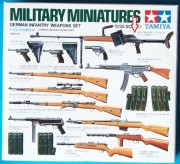  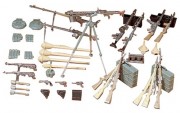 Back in my youth as a keen builder of model tanks, soldiers and aircraft, discovering this in my local toyshop opened me up to the realisation that the German soldier didn't just carry either a Kar98K rifle or an MP40, and that there was a whole world of other weaponry out there- Bergmanns, MP44s, etc.... Of course, being a kid, my subsequent German figure-building used pretty much all of this stuff, without much in the way of research, leading I suspect to my model shelves being lined with squads of 1/35 scale German infantry that in real life would have been a Quartermaster's nightmare, such was their eclectic collection of weaponry...  Tamiya did an equivalent set of US weapons, but IIRC have never got round to a similar British set? Last edited by Historian; September 8th, 2014 at 07:33 AM.. |
|
|
|

|
| The Following 17 Users Say Thank You to Historian For This Useful Post: |
|
|
#6854 | |
|
Veteran Member
Join Date: Apr 2014
Location: NZ
Posts: 4,043
Thanks: 70,759
Thanked 40,988 Times in 4,034 Posts
           |
Quote:
|
|
|
|

|
| The Following 14 Users Say Thank You to Dr Pepper For This Useful Post: |
|
|
#6855 |
|
Super Moderator
Join Date: Jul 2013
Location: Santee, Ca
Posts: 60,854
Thanks: 281,915
Thanked 814,268 Times in 60,901 Posts
           |
*BAILEY, KENNETH D.
*BAKER, ADDISON E. (Air Mission)
|
|
|

|
| The Following 12 Users Say Thank You to SanteeFats For This Useful Post: |
|
|
#6856 |
|
Super Moderator
Join Date: Jan 2009
Location: England
Posts: 26,246
Thanks: 162,419
Thanked 278,573 Times in 26,191 Posts
           |
On September 13th 1940, the tides were high and favourable for invasion. The Royal Navy moved battleships to Rosyth on Scotland's east coast and to Plymouth in Devon, unsafe ports in range of German bombers, so that they could react rapidly and with crushing force if the German side launched a seabourne invasion. The night of 13th September was marked by significant bombing; Cardiff was bombed and various parts of South London, and Buckingham Palace was hit again.
Meanwhile, Marshall Grazziani moved his forces across the Libyan border and into Egypt. He recaptured Fort Capuzzo, just inside Libya, which the British had cheekily seized on the first day of the Anglo-Italian war. There was a light and highly mobile British defence screen, composed mainly of the faster A9 cruiser tanks and of armoured cars, with orders to harrass the Italians but to retreat rather than accept losses, especially of armour which would not be replaced. The Italians reached Mersa Matruh by the end of the day. Luckily, even though the invasion scare was in full swing and Britain was hideously naked in terms of land forces, Winston Churchill had made a brave and difficult decision in August 1940 and sent two regiments of Matilda tanks to Egypt to reinforce the Seventh Armoured Division. These units reached Egypt in October and were available when General Richard O'Connor was planning Operation Compass. It was a very hard decision to send them when it was thought that the German invasion was days away, and Churchill faced obstruction from Sir John Dill, Chief of the Imperial General Staff, who was very opposed to reinforcing Egpyt when the climactic battle on English soil was thought to be imminent. This was when Churchill told Dill that the process of transferring the reinforcements would begin today or Britain would have a new CIGS tomorrow. Dill ordered the first of a series of necessary convoys to be assembled and designated them WS; it was years later that Churchill found out that Dill meant "Winston's Specials".
__________________
To view links or images in signatures your post count must be 0 or greater. You currently have 0 posts. |
|
|

|
| The Following 15 Users Say Thank You to scoundrel For This Useful Post: |
|
|
#6857 |
|
Veteran Member
Join Date: Oct 2010
Location: South of the North Pole
Posts: 4,977
Thanks: 47,583
Thanked 84,530 Times in 4,955 Posts
           |
Today, 17th of September, is the 70th anniversary of the Battle at Arnhem, Operation Market Garden.
Some 2000 awards were presented for gallantry during the desperate fighting of those nine days in September 1944. Amongst them were five VC's, four of them posthumous. The first Victoria Cross of the Arnhem campaign was awarded for actions beginning 70 years ago today, 17th of September, until 20th of September. This was the posthumous award of the Victoria Cross to Lieutenant John Grayburn, 2nd Battalion, The Parachute Regiment, Army Air Corps. 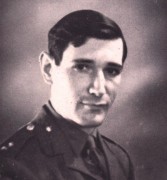 Part of the citation for the award in the London Gazette of 25th of January 1945 reads: 'War Office, 25th January, 1945. The KING has been graciously pleased to approve the posthumous award of the VICTORIA CROSS to: — Lieutenant John Hollington Grayburn (149002), Parachute Regiment, Army Air Corps (Chalfont St. Giles). For supreme courage, leadership and devotion to duty. Lieutenant Grayburn was a platoon commander of the Parachute Battalion which was dropped on 17th September, 1944, with the task of seizing and holding the bridge over the Rhine at Arnhem. North end of the bridge was captured and, early in the night, Lieutenant Grayburn was ordered to assault and capture the Southern end with his platoon. He led his platoon on to the bridge and began the attack with the utmost determination, but the platoon was met by a hail of fire from two 20 mm. quick firing guns, and from the machine guns of an armoured car. Almost at once Lieutenant Grayburn was shot through the shoulder. Although there was no cover on the bridge, and in spite of his wound, Lieutenant Grayburn continued to press forward with the greatest dash and bravery until casualties became so heavy that he was ordered to withdraw. He directed the withdrawal from the bridge personally and was himself the last man to come off the embankment into comparative cover. Later, his platoon was ordered to occupy a house which was vital to the defence of the bridge and he personally organised the occupation of the house. Throughout the next day and night the enemy made ceaseless attacks on the house, using not only infantry with mortars and machine guns but also tanks and self-propelled guns. The house was very exposed and difficult to defend and the fact that it did not fall to the enemy must be attributed to Lieutenant Grayburn's great courage and inspiring leadership. He constantly exposed himself to the enemy's fire while moving among, and encouraging, his platoon, and seemed completely oblivious to danger. On 19th September, 1944, the enemy renewed his attacks, which increased in intensity, as the house was vital to the defence of the bridge. All attacks were repulsed, due to Lieutenant Grayburn's valour and skill in organising and encouraging his men, until eventually the house was set on fire and had to be evacuated. Lieutenant Grayburn then took command of elements of all arms, including the remainder of his own company, and re-formed them into a fighting force. He spent the night organising a defensive position to cover the approaches to the bridge. On 20 September 1944, he extended his defence by a series of fighting patrols which prevented the enemy" gaining access to the houses in the vicinity, the occupation of which would have prejudiced the defence of the bridge. This forced the enemy to bring up tanks which brought Lieutenant Grayburn's positions under such heavy fire that he was forced to withdraw to an area farther North. The enemy now attempted to lay demolition charges under the bridge and the situation was critical. Realising this, Lieutenant Grayburn organised and led a fighting patrol which drove the enemy off temporarily, and gave time for the fuzes to be removed. He was again wounded, this time in the back, but refused to be evacuated. Finally, an enemy tank, against which Lieutenant Grayburn had no defence, approached so close to his position that it became untenable. He then stood up in full view of the tank and personally directed the withdrawal of his men to the main defensive perimeter to which he had been ordered. He was killed that night. From the evening of September 17th until the night of September 20th, 1944, a period of over three days, Lieutenant Grayburn led his men with supreme gallantry and determination. Although in pain and weakened by his wounds, short of food and without sleep, his courage never flagged. There is no doubt that, had it not been for this officer's inspiring leadership and personal bravery, the Arnhem bridge could never have been held for this time.' John Grayburn was 26 years old. In addition to the award of the Victoria Cross, John Grayburn was posthumously promoted to Captain. The VC. was presented to his widow, Marcelle, on 18th of December 1945 by HM. King George IV at Buckingham Palace. John Hollington Grayburn was born in Karachi, British India, on the 30th of January 1918. Lieutenant Grayburn was buried near to where he died. His body was exhumed and reburied in 1948. 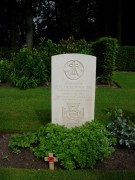 Lieutenant John Grayburn VC. is buried at Arnhem (Oosterbeek) War Cemetery, Arnhem, Gelderland, Holland. 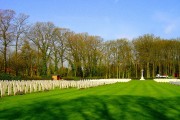 Arnhem (Oosterbeek) War Cemetery, Arnhem, Gelderland, Holland. The VC. group awarded to Lieutenant Grayburn VC. is today on display at The Parachute Regiment and Airborne Forces Museum, Imperial War Museum, Duxford, Cambridge, England. http://en.wikipedia.org/wiki/John_Hollington_Grayburn
__________________
"I think on-stage nudity is disgusting, shameful and damaging to all things American. But if I were 22 with a great body, it would be artistic, tasteful, patriotic and a progressive religious experience." - Shelley Winters Please read and follow
To view links or images in signatures your post count must be 0 or greater. You currently have 0 posts. |
|
|

|
| The Following 18 Users Say Thank You to rustler For This Useful Post: |
|
|
#6858 |
|
Veteran Member
Join Date: Oct 2010
Location: South of the North Pole
Posts: 4,977
Thanks: 47,583
Thanked 84,530 Times in 4,955 Posts
           |
Today, 17th of September, is the 70th anniversary of the start of a series of actions that was to result in the award of the Victoria Cross to Captain (temporary Major) Robert Cain, Royal Northumberland Fusiliers, attached to the South Staffordshire Regiment, 1st Airborne Division.
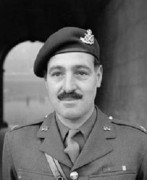 Part of the citation for the award in the London Gazette of 2nd of November 1944 reads: 'War Office, 2nd November, 1944. The KING has been graciously pleased to approve awards of the VICTORIA CROSS to: — Captain (temporary Major) Robert Henry Cain (129484), The Royal Northumberland Fusiliers, (attd. The South Staffordshire Regiment) (I Airborne Division) (Salcombe, Devon). In Holland on 19th September, 1944, Major Cain was commanding a rifle company of the South Staffordshire Regiment during the Battle of Arnhem when his company was cut off from the rest of the battalion and during the next six days was closely engaged with enemy tanks, self-propelled guns and infantry. The Germans made repeated attempts to break into the company position by infiltration and had they succeeded in doing so the whole situation of the Airborne Troops would have been jeopardised. Major Cain, by his outstanding devotion to duty and remarkable powers of leadership, was to a large extent personally responsible for saving a vital sector from falling into the hands of the enemy. On 20th September a Tiger tank approached the area held by his company and Major Cain went out alone to deal with it armed with a Piat. Taking up a position he held his fire until the tank was only 20 yards away when he opened up. The tank immediately halted and turned its guns on him, shooting away a corner of the house near where this officer was lying. Although wounded by machine gun bullets and falling masonry, Major Cain continued firing until he had scored several direct hits, immobilised the tank and supervised the bringing up of a 75 mm. howitzer which completely destroyed it. Only then would he consent to have his wounds dressed. In the next morning this officer drove off three more tanks by the fearless use of his Piat, on each occasion leaving cover and taking up position in open ground with complete disregard for his personal safety. During the following days, Major Cain was everywhere where danger threatened, moving amongst his men and encouraging them by his fearless example to hold out. He refused rest and medical attention in spite of the fact that his hearing had been seriously impaired because of a perforated eardrum and he was suffering from multiple wounds. On 25 September the enemy made a concerted attack on Major Cain's position, using self-propelled guns, flame throwers and infantry. By this time the last Piat had been put out of action and Major Cain was armed with only a light 2" mortar. However, by a skilful use of this weapon and his daring leadership of the few men still under his command, he completely demoralized the enemy who, after an engagement lasting more than three hours, withdrew in disorder. Throughout the whole course of the Battle of Arnhem, Major Cain showed superb gallantry. His powers of endurance and leadership were the admiration of all his fellow officers and stories of his valour were being constantly exchanged amongst the troops. His coolness and courage under incessant fire could not be surpassed.' Robert Cain was 35 years old when he won the VC. His was the only VC. presented to a living soldier for action during the Arnhem Campaign. In addition, he is the only Manxman to have received the award. 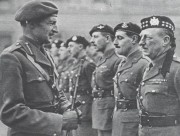 Major Cain (2nd Right) at his investiture at Buckingham Palace on 6th of December 1944. Later Major Cain worked with the Norwegian Resistance group Milorg, accepting the surrender of large numbers of German soldiers who were in Norway, and who it was feared might fight on. Robert Henry Cain was born in Shanghai, China, on 2nd of January 1909. He died of cancer on 2nd of May 1974, aged 65. 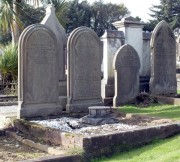 Major Robert Cain VC. was cremated and his ashes are buried at Kirk Breddan, New churchyard, Douglas, Isle of Man. 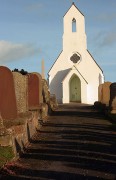 Kirk Breddan, Isle of Man. The VC. group awarded to Major Robert Cain VC. is today on display at the Staffordshire Regimental Museum, Lichfield, Staffordshire, England. http://en.wikipedia.org/wiki/Robert_Henry_Cain Robert Cain's daughter Frances, is married to the TV presenter Jeremy Clarkson, who presented the BBC documentary 'The Victoria Cross for Valour', in 2003. Clarkson says that neither his wife nor he knew of Robert Cain having won the VC until after his death in 1974. I seem to remember Rupertramjet mentioning knowing Tasker Watkins VC through their love of rugby, but inspite of Watkins knowing that Rupert was a soldier, he never mentioned the VC. Modesty, it seems, is a trait of these men.
__________________
"I think on-stage nudity is disgusting, shameful and damaging to all things American. But if I were 22 with a great body, it would be artistic, tasteful, patriotic and a progressive religious experience." - Shelley Winters Please read and follow
To view links or images in signatures your post count must be 0 or greater. You currently have 0 posts. |
|
|

|
| The Following 17 Users Say Thank You to rustler For This Useful Post: |
|
|
#6859 |
|
Veteran Member
Join Date: Oct 2010
Location: South of the North Pole
Posts: 4,977
Thanks: 47,583
Thanked 84,530 Times in 4,955 Posts
           |
Today, 18th of September, is the 70th anniversary of the action that was to result in the award of a posthumous Victoria Cross to Rifleman Sher Bahadur Thapa, 1st Battalion, 9th Gurkha Rifles, Frontier Force, Indian Army.
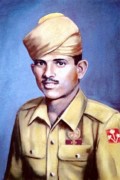 Part of the citation for the award in the London Gazette of 26th of December 1944 reads: ' In Italy on the night of 18th/19th September, 1944, a Battalion of the 9th Gurkha Rifles was fighting its way forward into the State of San Marino against bitter opposition from German prepared positions dominating the river valley and held in considerable strength in depth. Rifleman Sher Bahadur Thapa was a number one Bren gunner in a rifle Company, which just before dawn came under heavy enemy observed small arms and mortar fire. He and his section commander charged an enemy post, killing the machine gunner and putting the rest of the post to flight. Almost immediately another party of Germans attacked the two men and the section commander was badly wounded by a grenade, but, without hesitation, this Rifleman, in spite of intense fire, rushed at the attackers and reaching the crest of the ridge brought his Bren gun into action against the main body of the enemy who were counterattacking our troops. Disregarding suggestions that he should withdraw to the cover of a slit trench, Rifleman Sher Bahadur Thapa lay in the open under a hail of bullets, firing his Bren gun which he knew he could only bring to bear on the German emplacements from his exposed position on the crest of the hill as they would not have been visible from the slit trench. By the intensity and accuracy of the fire which he could bring to bear only from the crest this isolated Gurkha Bren gunner silenced several enemy machine guns and checked a number of Germans who were trying to infiltrate on to the ridge. At the end of two hours both forward Companies had exhausted their ammunition and, as they Were by then practically surrounded, they were ordered to withdraw. Rifleman Sher Bahadur Thapa covered their withdrawal as they crossed the open ground to positions in the rear and himself remained alone at his post until his ammunition ran out. He then dashed forward under accurate small arms and mortar fire and rescued two wounded men, who were lying between him and the advancing Germans, while returning the second time he paid the price of his heroism and fell riddled by machine gun bullets fired at point black range. The great bravery of this Gurkha soldier was instrumental in saving the lives of many of his companions and his outstanding devotion to duty contributed largely to the severe reverse which the enemy eventually suffered when our troops counter-attacked. His name will live in the history of his Regiment as a very gallant soldier.' Sher Bahadur Thapa was 23 years old. He was born on 20th of November 1921 in Ghalachap, Nepal. 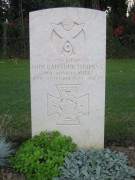 Sher Bahadur Thapa VC. is buried in the Gurkha War Cemetery, Rimini, Italy.  Gurkha War Cemetery, Rimini, Sher Bahadur Thapa's grave is in the middle, back row. The VC. group awarded to Sher Bahardur Thapa is kept by the 9th Gorkha Rifles RHQ. at Varanasi, India. http://en.wikipedia.org/wiki/Sher_Bahadur_Thapa EDIT: Note that Sher Bahadur Thapa's headstone states that he died on the 18th of September, but this is incorrect, he actually died on the 19th.
__________________
"I think on-stage nudity is disgusting, shameful and damaging to all things American. But if I were 22 with a great body, it would be artistic, tasteful, patriotic and a progressive religious experience." - Shelley Winters Please read and follow
To view links or images in signatures your post count must be 0 or greater. You currently have 0 posts. Last edited by rustler; September 18th, 2014 at 06:52 AM.. |
|
|

|
| The Following 17 Users Say Thank You to rustler For This Useful Post: |
|
|
#6860 |
|
Veteran Member
Join Date: Oct 2010
Location: South of the North Pole
Posts: 4,977
Thanks: 47,583
Thanked 84,530 Times in 4,955 Posts
           |
Today, 19th of September, is the 70th anniversary of the action that was to result in the award of a posthumous Victoria Cross to Flight-Lieutenant David Lord, DFC. MID. No. 271 Squadron, Royal Air Force.
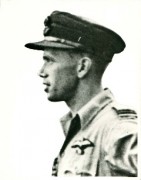 Part of the citation for the award in the London Gazette of 13th of November 1945 reads: 'Air Ministry, 13th November, 1945. The KING has been graciously pleased to confer the VICTORIA CROSS on the undermentioned officer in recognition of most conspicuous bravery:— Flight Lieutenant David Samuel Anthony LORD, D.F.C. (49149), R.A.F., 271 Sqn. (deceased). Flight Lieutenant Lord was pilot and captain of a Dakota aircraft detailed to drop supplies at Arnhem on the afternoon of the 19th September, 1944. Our airborne troops had been surrounded and were being pressed into a small area defended by a large number of anti-aircraft guns. Air crews were warned that intense opposition would be met over the dropping zone. To ensure accuracy they were ordered to fly at 900 feet when dropping their containers. While flying at 1,500 feet near Arnhem the starboard wing of Flight Lieutenant Lord's aircraft was twice hit by anti-aircraft fire. The starboard engine was set on fire. He would have been justified in leaving the main stream of supply aircraft and continuing at the same height or even abandoning his aircraft. But on learning that his crew were uninjured and that the dropping zone would be reached in three minutes he said he would complete his mission, as the troops were in dire need of supplies. By now the starboard engine was burning furiously. Flight Lieutenant Lord came down to 900 feet, where he was singled out for the concentrated fire of all the anti-aircraft guns. On reaching the dropping zone he kept the aircraft on a straight, and level course while supplies were dropped. At the end of the run, he was told that two containers remained. Although he must have known that the collapse of the starboard wing could not be long delayed, Flight Lieutenant Lord circled, rejoined the stream of aircraft and made a second run to drop the remaining supplies. These manoeuvres took eight minutes in all, the aircraft being continuously under heavy anti-aircraft fire. His task completed, Flight Lieutenant Lord ordered his crew to abandon the Dakota, making no attempt himself to leave the aircraft, which was down to 500 feet. A few seconds later, the starboard wing collapsed and the aircraft fell in flames. There was only one survivor, who was flung out while assisting other members of the crew to put on their parachutes. By continuing his mission in a damaged and burning aircraft, descending to drop the supplies accurately, returning to the dropping zone a second time and, finally, remaining at the controls to give his crew a chance of escape, Flight Lieutenant Lord displayed supreme valour and self-sacrifice.' David Lord was 30 years old. David Samuel Anthony Lord was born in Cork, Co. Cork, Ireland on 18th of October 1913. At one point he travelled to Spain to study to become a priest. Deciding that the priesthood was not for him, he eventually chose an altogether different path and joined the RAF in 1936. Ft. Lt Lord was awarded the DFC in 1943. Only the navigator, F/Lt Harold King survived the last mission at Arnhem, being flung out of the aircraft as it crashed and becoming a prisoner of war. It was only after his release in mid 1945 that the story of David Lord's last action was known, and David Lord was awarded a posthumous Victoria Cross. 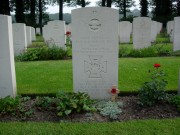 Flight-Lieutenant David Lord VC. DFC. MID. is buried alongside his crew at Arnhem (Oosterbeek) War Cemetery, Arnhem, Gelderland, Holland. 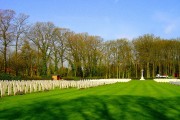 Arnhem (Oosterbeek) War Cemetery, Arnhem, Gelderland, Holland. The VC. group awarded to Fl. Lt. Lord VC. DFC. MID. is today on display in the Lord Ashcroft Gallery at the Imperial War Museum, London. http://en.wikipedia.org/wiki/David_Lord
__________________
"I think on-stage nudity is disgusting, shameful and damaging to all things American. But if I were 22 with a great body, it would be artistic, tasteful, patriotic and a progressive religious experience." - Shelley Winters Please read and follow
To view links or images in signatures your post count must be 0 or greater. You currently have 0 posts. |
|
|

|
| The Following 15 Users Say Thank You to rustler For This Useful Post: |
 |
|
|